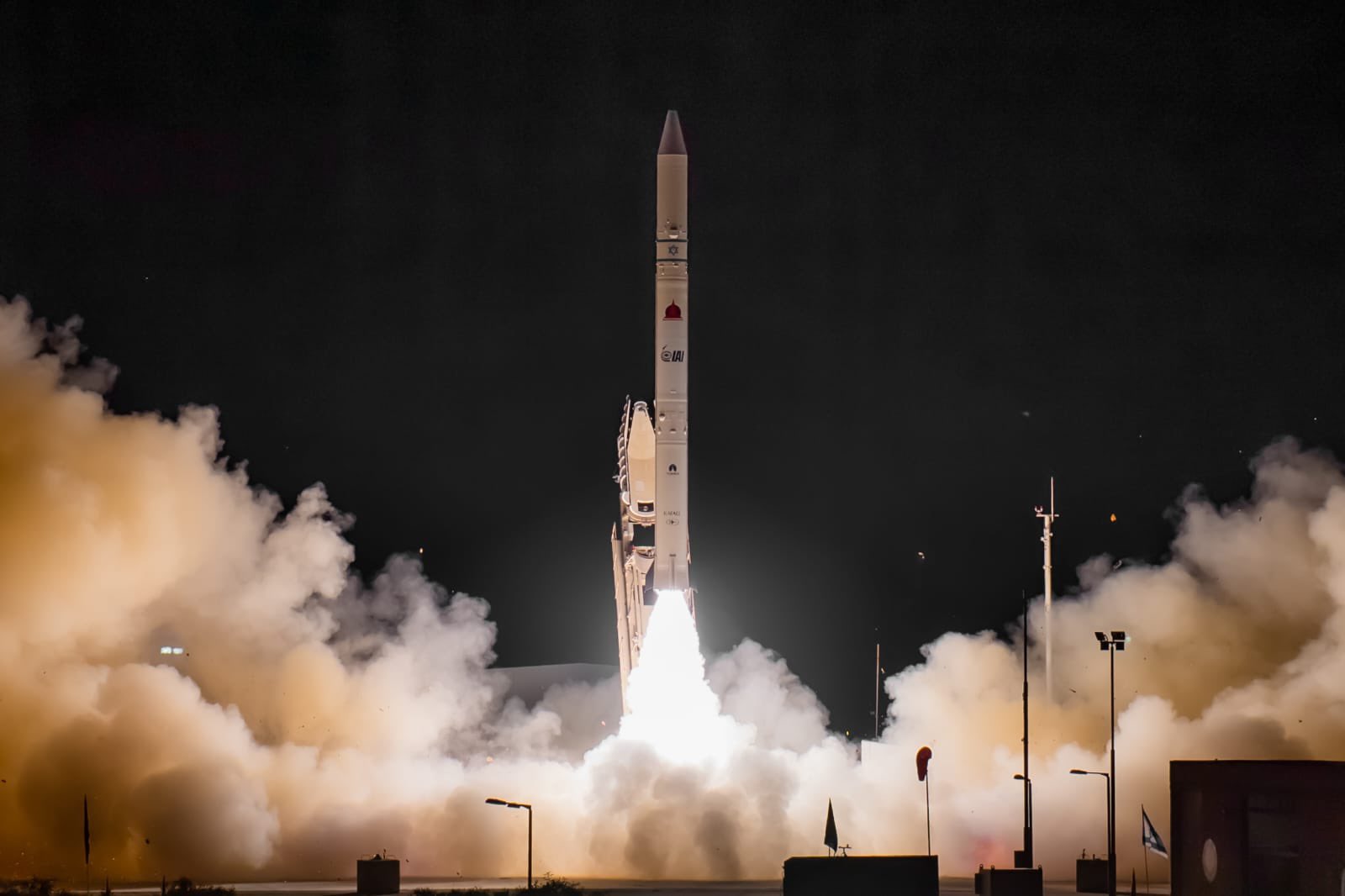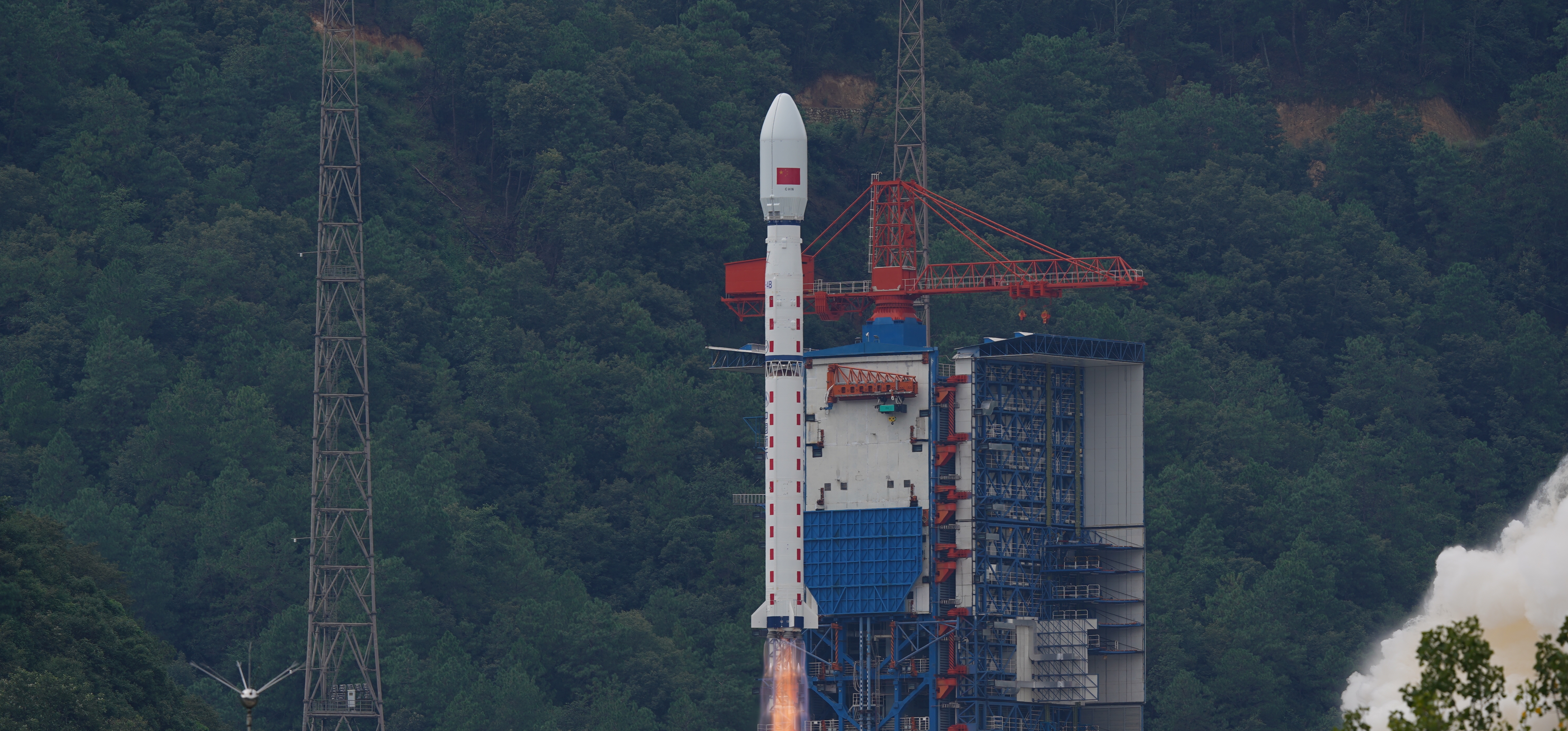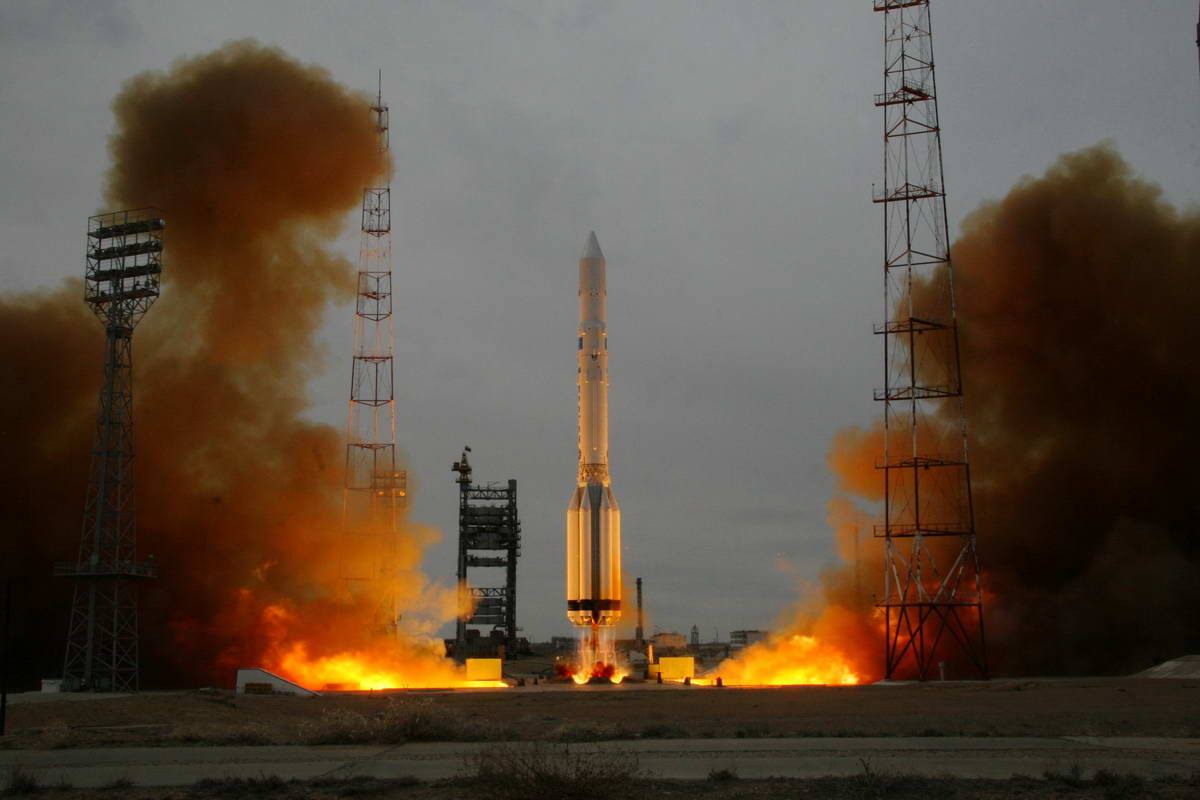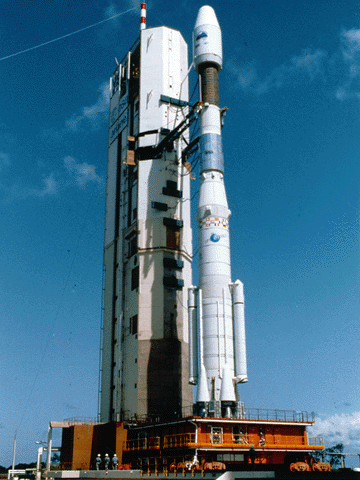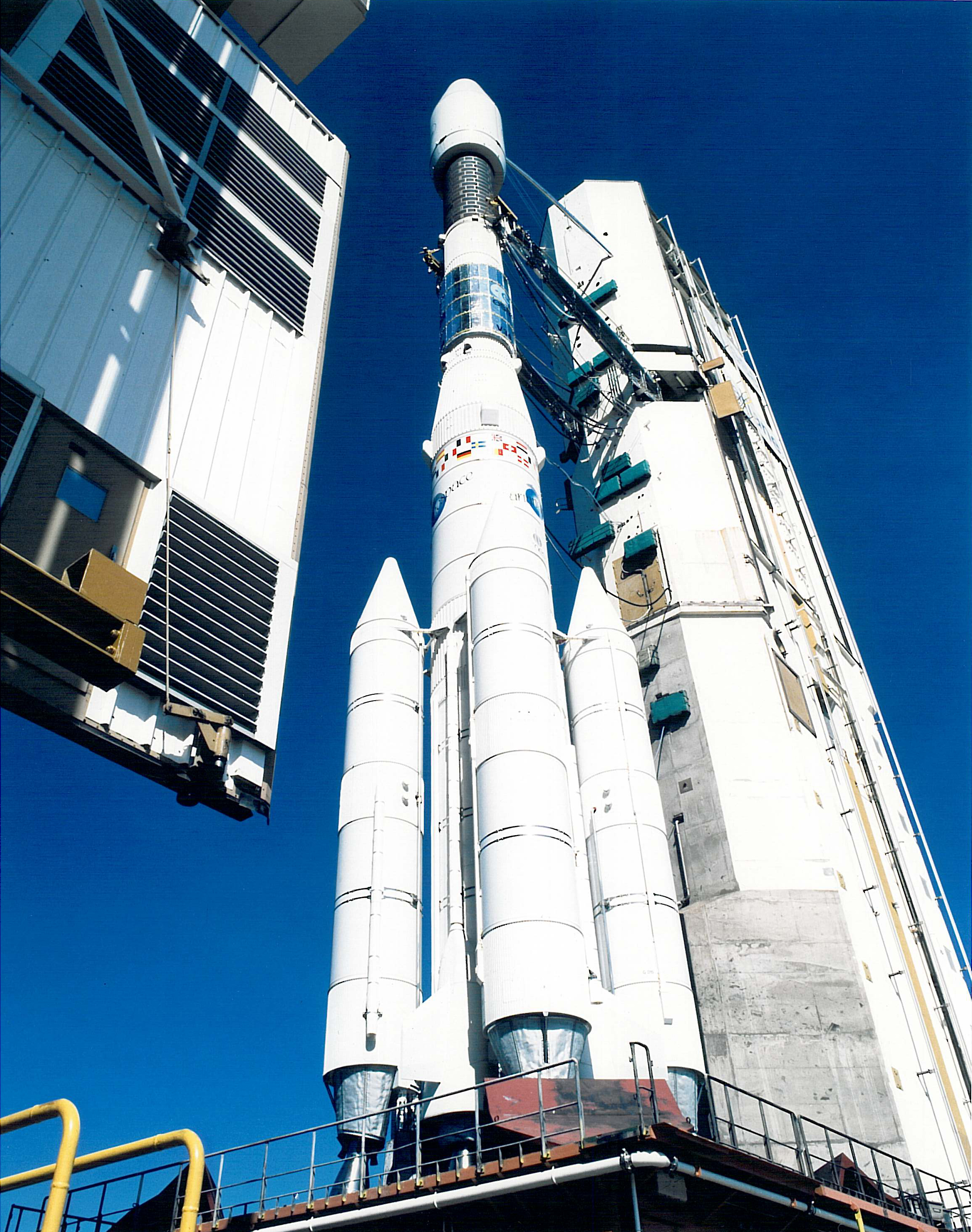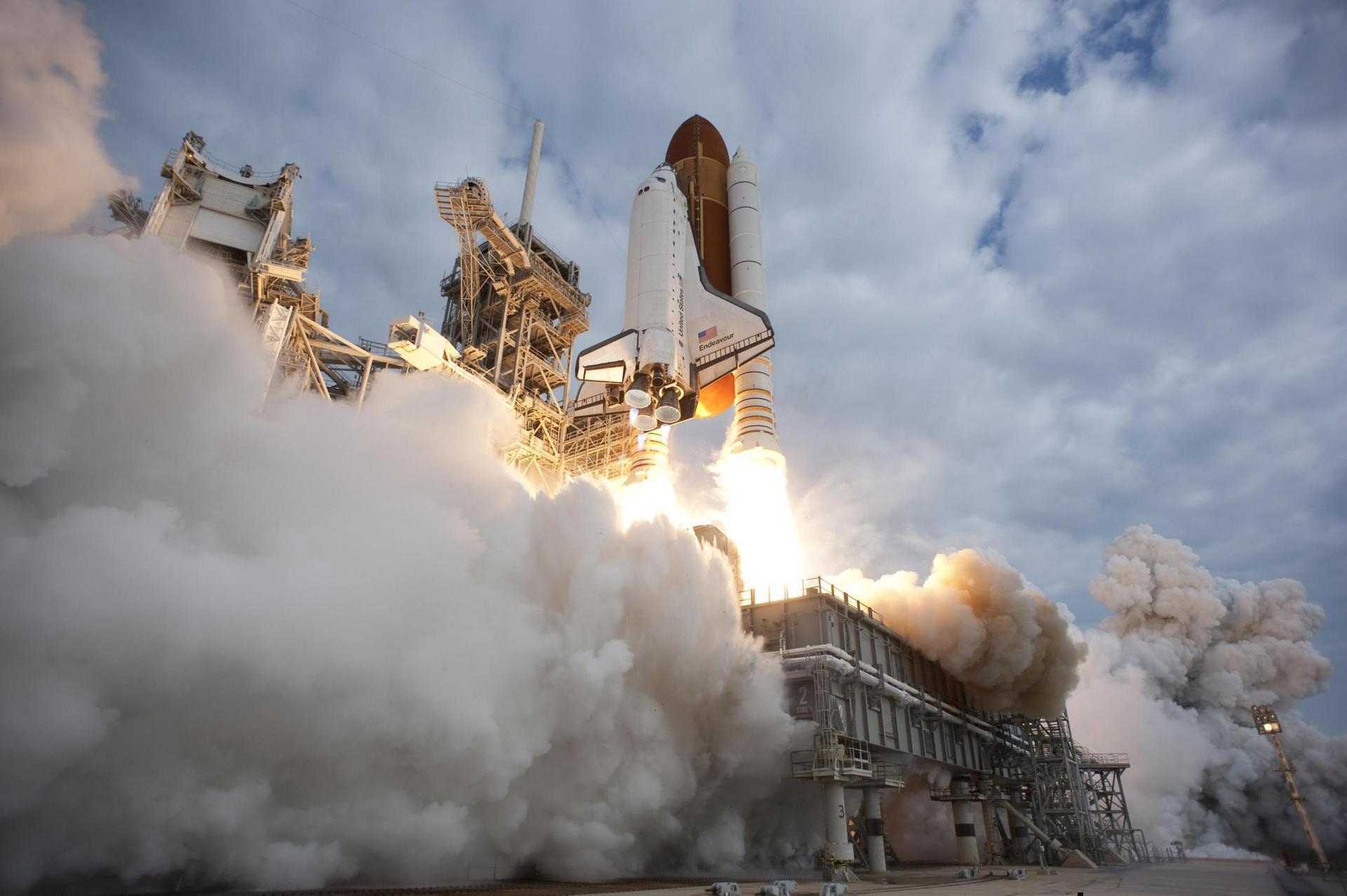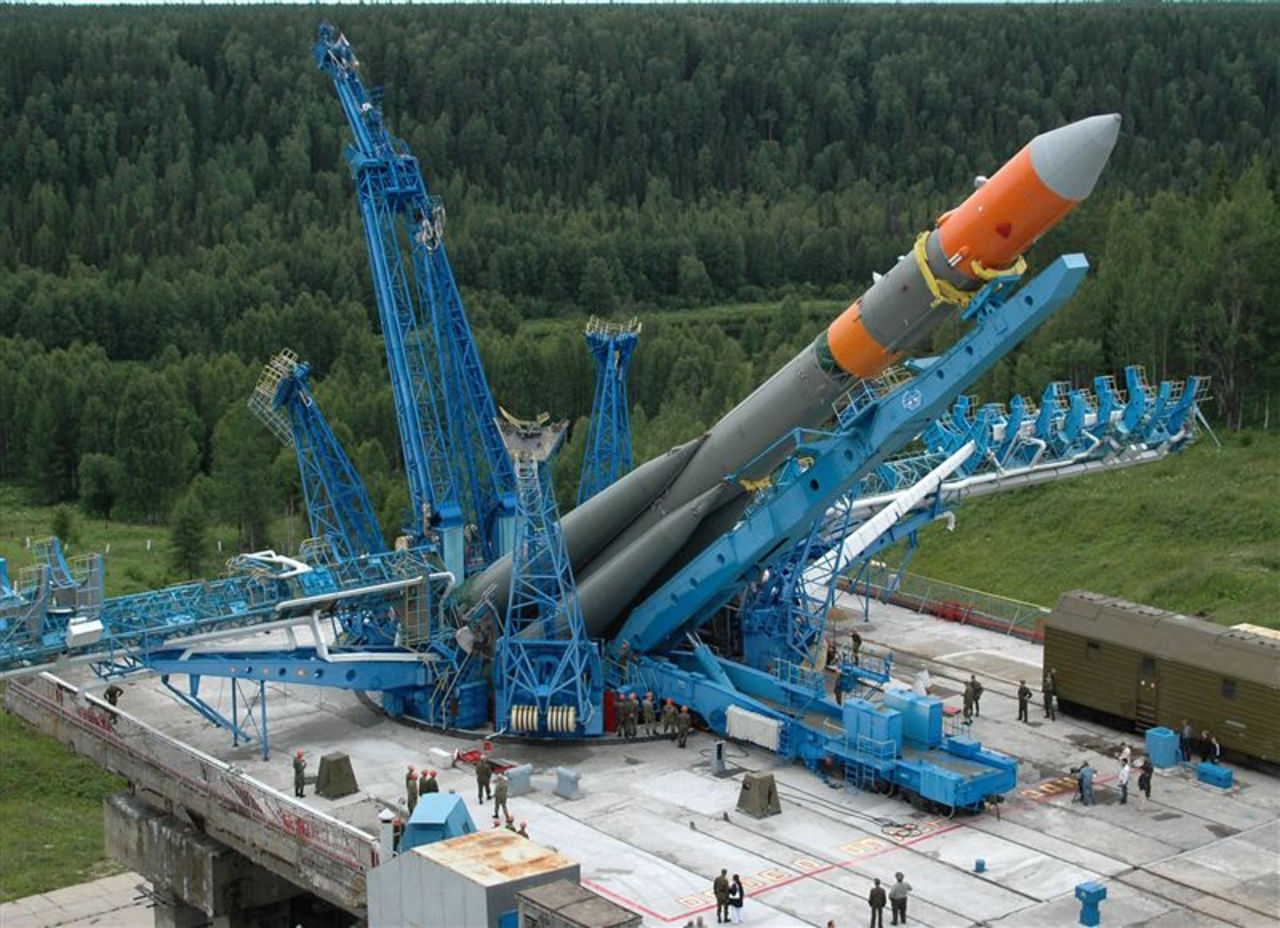Previous Spaceflight Launches
Filter by Agency, Locations or Vehicles
Show All LaunchesShavit-2 | Ofeq-5
Israel Aerospace Industries | IsraelPalmachim Airbase, State of Israel
May 28, 2002, 3:25 p.m.
Long March 4B | Hai Yang 1 & Feng Yun 1D
China Aerospace Science and Technology Corporation | ChinaTaiyuan Satellite Launch Center, People's Republic of China
May 15, 2002, 1:50 a.m.
Status: Launch Successful
Mission:
HaiYang abbreviated HY, is a series of marine remote sensing satellites developed and operated by China since 2002. As of June 2020, six satellites were launched and two more are planned. Feng Yun 1D was a polar orbiting meteorological satellite.
Sun-Synchronous OrbitProton-K/DM-2M | DirecTV-5
Khrunichev State Research and Production Space Center | RussiaBaikonur Cosmodrome, Republic of Kazakhstan
May 7, 2002, 5 p.m.
Status: Launch Successful
Mission:
T5 (formerly DirecTV-5) is a dormant communications satellite launched from Baikonur Cosmodrome, Kazakhstan in May, 2002 to provide mainly Spanish language satellite television programs to DirecTV customers from the 119 degrees West longitudinal orbit. It was built by Space Systems/Loral, as part of its LS-1300 line. In May 2004, DIRECTV successfully launched DIRECTV 7S (later T7S), their second high powered spot beam. T7S is located at the 119 degree orbital slot. The satellite was renamed to T5 in 2017.
Geostationary OrbitDelta 7920-10L | Aqua
McDonnell Douglas | United States of AmericaVandenberg SFB, CA, USA
May 4, 2002, 9:54 a.m.
Ariane 42P | SPOT 5
Aérospatiale | FranceGuiana Space Centre, French Guiana
May 4, 2002, 1:31 a.m.
Soyuz-U | Soyuz TM-34
Russian Federal Space Agency (ROSCOSMOS) | RussiaBaikonur Cosmodrome, Republic of Kazakhstan
April 25, 2002, 6:26 a.m.
Status: Launch Successful
Mission:
Soyuz TM-34 was a visiting mission to ISS, which carried 3 cosmonauts and astronauts. Russian Commander, cosmonaut Yuri Gidzenko alongside Flight Engineer, ESA astronaut Roberto Vittori and Flight Engineer/Spaceflight Participant Mark Shuttleworth launched aboard the Soyuz spacecraft on April 25, 2002, 06:26:35 UTC. They docked with the station two days later. During their stay there, crew assisted Expedition 4 members in station work. Soyuz TM-34 crew returned aboard Soyuz TM-33, landing safely back on Earth on May 5, 2002, 03:51:53 UTC.
Low Earth OrbitAriane 44L | NSS 7
Aérospatiale | FranceGuiana Space Centre, French Guiana
April 16, 2002, 11:02 p.m.
Space Shuttle Atlantis / OV-104 | STS-110
National Aeronautics and Space Administration | United States of AmericaKennedy Space Center, FL, USA
April 8, 2002, 8:44 p.m.
Status: Launch Successful
Mission:
STS-110 was a Space Shuttle mission to the International Space Station (ISS) on 8–19 April 2002 flown by Space Shuttle Atlantis. The main purpose was to install the S0 Truss segment, which forms the backbone of the truss structure on the station.
Low Earth OrbitMolniya-M | US-K 81
Russian Space Forces | RussiaPlesetsk Cosmodrome, Russian Federation
April 1, 2002, 10:06 p.m.
Proton-K/DM-2M | INTELSAT 903
Khrunichev State Research and Production Space Center | RussiaBaikonur Cosmodrome, Republic of Kazakhstan
March 30, 2002, 5:25 p.m.
